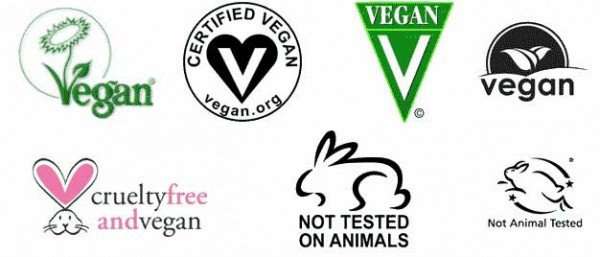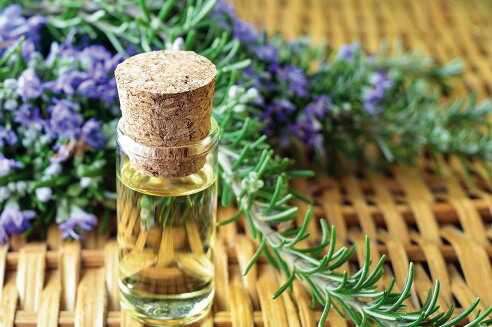
Back in 1979, I remember standing at Oxford Circus handing out fliers on animal testing (not a popular thing at that time), but even then there were animal friendly alternatives – not many granted, but they were around and I was using them. If I remember correctly, it was just Yardley, Innoxa and Beauty Without Cruelty (although The Body Shop started in 1976, they weren’t making cosmetics at the time). Even so, all of these products were (and still do) use synthetic perfumes and a whole heap of chemicals so, cruelty-free isn’t always eco-friendly too. 42 years later, it’s really easy to buy products that are cruelty-free AND eco-friendly – you just have to know a few basic facts about the cosmetics industry (which are all easy to find via a search, but I’ll lay it out for you here).
Over the decades, I’ve become used to reading labels and also cynical about not believing the hype that you get from manufacturers! One of the best ones recently (although it wasn’t about toiletries) was about a very well-known washing-up liquid. The advert featured school children washing up and went on about how much water you saved because the liquid was so economical, ergo that it was good for the environment. It failed to mention that the said washing-up liquid was packed with a whole host of nasty chemicals that were then being poured into our water system….hardly environmentally friendly!
Seriously though, we are living at a time now where it’s really important to be savvy about reading labels so that you can actually see what’s in the product you’re putting on your body – and it’s a legal requirement for the manufacturer to state the ingredients. I know this because I’m in the process myself of getting my natural soaps certified so that I can sell them.
Another issue is that the term organic actually has to go through a certification process and display a recognised certification label for you to know for certain that what you’re buying is bone fide (for example, the Soil Association label); the logo is important because it’s not illegal to just say that a product is organic – confusing or what?
…and just because a product says it’s “natural”, it doesn’t mean that it is. Let’s face it, nothing is actually natural unless you can find it unadulterated in the natural world; it’s as simple as that. The term natural doesn’t mean that a product is vegan or cruelty-free either and of course it’s worth remembering that products from sperm whales or honey etc can be classed as natural – but there are certification logos for vegan and cruelty-free products too. The bottom line is that the onus is on you to wise up to what you’re buying – if you care about your impact on the environment as well as unnecessary animal cruelty.
There’s a nasty little test called the LD50 test, which means that animals are tested with a product to see how much of it, it takes to kill them. Nice. It’s also worth mentioning that although it’s against the law to test on animals for toiletries and cosmetics in this country, less ethical companies get around this by saying that they have to test their products for the Chinese market because it’s a legal requirement there (but it’s lucrative for them of course), when more ethical companies just refuse to sell to China, telling them instead that they need to stop insisting on animal testing. It’s an uncomfortable thought that the eyeshadow you love was dropped into a rabbit’s eyes whilst her/his head was held in a clamp so that they couldn’t move, until their eyes ulcerated – all for our vanity.
As for our health and the environmental impact of chemicals widely used in the personal care/beauty industry, let’s highlight a few of the most widely (and toxic) used:
Parabens: Used as preservatives, but it’s now been found that they lower collagen levels and hyaluronic acid levels (not great if you’re older as these keep the skin nice and elastic) so they can speed up skin aging. They also worsen eczema and disrupt the balance and health of hormones.
Sulphates: You’ve probably seen them listed as sodium lauryl sulphate (SLS) and sodium laureth sulphate (SLES). They’re widely used in shampoos and as cleaning/foaming agents. They actually dry the skin (which seems a bit counter-intuitive) and cause irritation. Inevitably, for those with dermatitis or eczema (sulphates have been shown to actually cause eczema), products containing SLS or SLES are best avoided.
Phthalates: Also have hormone-disrupting effects and are commonly used in mainstream perfumes as a fixative (to make the scent last longer). You’ll see them listed as DEP, DMP and BBP, DEHP and DBP. They’re problematic if you are planning to conceive.
Then of course, we need to look at:
Microplastics
What are they? Well, tiny plastic particles smaller than 5mm, found in clothing, cleaning products, bottled water, toiletries and cosmetics. If that’s not bad enough, they get into our water systems and then on into oceans where they’re eaten by wildlife – and we consume them too of course.
Whilst they have been banned in this country as well as a load of other countries, it’s a worrying thought to know that the bans vary depending on the country. In the UK, the ban is limited to “rinse-off cosmetics” (eg. toothpaste, skin exfoliators). Inevitably, this has meant that many companies have used this as an excuse to use biodegradable plastic, better of course, but it still takes a very long time to biodegrade. As such, we’re pretty well stuck with the damage that’s already been done, oh and the beauty industry is the NUMBER ONE offender in terms of plastic production and pollution in the whole world!
So, what are the alternatives?
There are some really lovely, truly natural brands around if you prefer to buy stuff and whilst I don’t personally recommend Lush because of their rather overwhelming synthetic perfumes, I must commend them on their shampoo bars, which of course have no packaging whatsoever (they’re basically a variation on a soap recipe). Yes, you’re likely to have to spend more for environmentally friendly products but it’s my experience that people often over buy and bathrooms and make-up bags are often littered with products that people rarely use. It’s a very personal choice as to what individuals like so I’m not going to recommend things that I like, Instead, my advice is:
- Just search online for something like: best eco-friendly cosmetic brands and you’ll find a whole host of lovely stuff. Take your time. Read the product information etc.
- I think it’s also safe to say that it’s a good idea to steer clear of well-known big brands. Not a single one of them is what they claim to be!
- Look for the cruelty-free and organic logos, although even if a product isn’t organic, it can still be pretty natural
- Avoid products with the word “perfume” or “parfum” in their ingredients list. It’s hiding a whole host of stuff you don’t know about.
- Try to buy products which aren’t over-packaged, products where you can re-fill a bottle you already have or they’re in glass bottles
- Make your own.
Next month I’ll follow up this article with some recipes for making your own cosmetics and toiletries!
Sharon Duggan is an Accredited Climate Change Teacher, she also set up and leads both the Cranleigh Climate Action Group and Cranleigh Plant Share (both on Facebook). She also writes on her Facebook page.
Find out more at: www.facebook.com/howtoliveagreenerlife
See all of Sharon’s latest features HERE.













